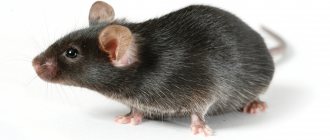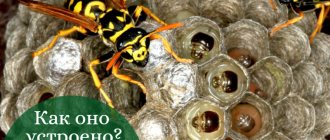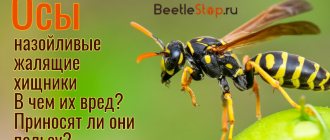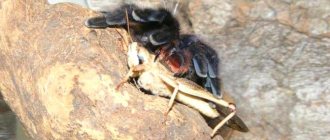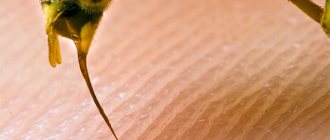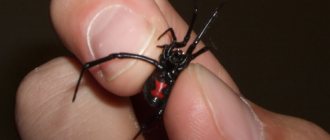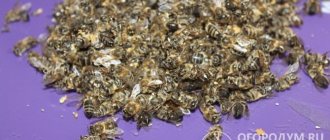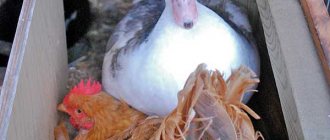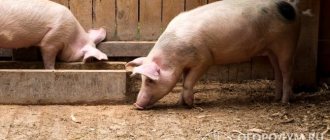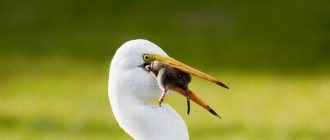Wasps, like bees, belong to the same family. Adults also feed on nectar and pollinate flowers, so the question arises: do they make honey? In our area, no one has heard of breeding the striped family for their own benefit. However, in the countries of Africa and Central America, this activity is typical for some species. Aspen honey differs from bee honey in quality, quantity, and beneficial properties.
Do wasps give honey?
This question can only be answered positively in relation to insects belonging to 2 species living in the countries of South America, Argentina and Mexico:
- Polybia Occidentalis (Polybiinae Occidentalis);
- Mexican honey wasp (Brachygastra lecheguana).
Polybiinae Occidentalis.
They not only produce honey, but also store it for the winter, although its reserves are very meager compared to bees. The harvested product is barely enough to feed all family members.
If bees produce 15-17 kilograms of delicacy per season, then wasps are unable to collect even a kilogram.
Mexican honey wasps make nests from paper, which they obtain by chewing wood and treating it with sticky saliva. Their homes (they are usually located among citrus trees) can reach half a meter in diameter. They, like bees, make honeycombs, but not from wax, since they cannot produce such a substance.
Honey wasps, like bees, have a hierarchy. They have a queen, worker insects, warriors and drones. But in their development they are significantly inferior to their relatives.
Alcoholic cocktail dessert
Experienced baristas know how to make “wasp honey” with their own hands. To do this, you need to beat four egg yolks and add them to a can of condensed milk. Continue using the mixer until the mixture is airy. After this, mix a spoonful of instant coffee with a very small amount of boiling water (so that the granules disappear). Stir in the milk-yolk mixture. Pour in a thin stream one hundred milliliters of alcohol (this dessert is eaten with a spoon) or a glass of vodka (the cocktail is served with a straw). Place the finished product in the refrigerator for an hour.
Is it possible to find such honey in Russia?
In Russia and neighboring countries, these insects do not collect honey. This situation is explained by the lack of honey-bearing species, which is associated with an unsuitable climate for them (too harsh and frosty).
Domestic wasps can only destroy the nests of bees and eat the supplies they have prepared. True, on the walls of the dwellings of striped insects you can sometimes see a layer of nectar (it is called a “spray”), the total mass of which can reach 20-30 grams only in extremely rare cases.
But such a product is formed spontaneously. The fact is that wasps, feeding on plant sap, accumulate pollen and nectar on their paws, which they carry into the nest. There is no need for insects to make provisions for the winter, since with the onset of persistent cold weather they fall into suspended animation.
What role do they play?
Despite their honey uselessness, wasps are a very important part of the natural fauna. They use pest larvae to feed their offspring. Thus, stinging insects, which are so disliked by many, do a good deed for the garden and cultivated plants. For example, the burrowing or ground wasp is the worst enemy of mole crickets and their larvae. In order to attract these orderlies to the garden, farmers even plant flowering plants around the perimeter of the garden.
Wasps of the Amorphilla species are also useful - they actively destroy caterpillars of various species. In addition, wall, nose, paper and large-headed ones are excellent at clearing the garden of borers, leaf beetles, flies, cicadas and beetles. As you can see, a dangerous insect benefits nature, the harvest, and therefore provides a lot of benefits to humans.
These creatures perform the pollination function, of course, worse than bees, since their natural task is different. But stings, which everyone fears more than bees, are actually not so dangerous. In terms of threat to humans, a wasp sting is not far behind a bee sting. Wasp venom still exhibits a tonic effect, so don’t be too alarmed if a wasp stings. The dangerous number of bites for a person is up to 20.
Is it possible to eat wasp honey?
If the answer to the question “Do wasps collect honey?” positive, then another one naturally arises - “Can this product be eaten?” It turns out that South African and Mexican Indians have been collecting aspen honey since ancient times and using it for food purposes.
They have not given up this activity even in our time, although it is impossible to collect a lot of honey. It is also not worth breeding wasps for the purpose of obtaining honey, since their performance is incomparable to that of a bee. Such production will be unprofitable.
Application
The aspen variety has no special purpose, although it is used in everyday life and in nutrition. Since it is inferior to bee in many respects, it is not very advisable to use it for health improvement.
It is most often used in cosmetology, for anti-aging creams and masks. The product contains antioxidants, useful components that smooth out wrinkles and give the skin elasticity, rejuvenating the face. You can make such a useful mask on your own by mixing a little wasp variety with olive oil and applying the mixture to your face for 20 minutes.
Now we know who makes honey besides bees. This information may also be useful for those who come across an exotic aspen variety in stores and markets. It should be taken into account that in Russia wasps harvest very little honey, only for food, so there will not be large harvests. You shouldn’t trust fakes; it’s better to buy honey from America or classic bee honey.
What is so special about this honey?
Aspen and bee products differ in the main characteristics: quantity, quality, taste and beneficial properties.
Honey made by wasps is dark, viscous and very thick. It emits a fragrant floral aroma. The taste is pleasant and rich, but more reminiscent of nectar. Taste characteristics vary depending on which plants the pollen is collected from.
The sweet composition includes sucrose, fructose, proteins, mineral elements (mainly calcium) and unprocessed pollen. There are no enzymes in the wasp product, since these insects do not have glands similar to those of bees. Therefore, honey quickly loses viscosity and crystallizes.
Although the product collected by wasps is quite suitable for food and quite nutritious, it is not of particular value for human health and is not used in folk medicine, since it is produced in small quantities. In addition, if honey is obtained from pollen of poisonous plants, it can cause severe poisoning.
How honey is made
Each bee has its own purpose. Honey is made from nectar. The process is gradual.
Stage 1: collecting nectar
The forager bee places the collected nectar in the honey sac and brings it to the hive.
Stage 2: Chewing
In the hive, the worker bee takes nectar from the forager and processes it with the help of her saliva.
Stage 3: Move
After the splitting process, the honey is transferred to the honeycomb.
Step 4: Cooking
The right amount of moisture is necessary for honey to cook. The bees flap their wings to create the desired consistency.
Stage 5: preparation
When the consistency is almost perfect, the honeycomb is sealed with wax and left to mature.
Traps
Considering the above points, it is not surprising that some beekeepers or ordinary summer residents have a desire to destroy wasps. The most common method of catching them is traps. Of course, you can buy them in a store, but their effectiveness will be much higher if you make them yourself. To make it, you need things that every summer resident has on hand, namely: a plastic bottle, scissors, tape or wire.
Important! Many standard insect traps do not work on wasps.
The procedure for making a trap:
- The top third of the bottle is cut off.
- A substance is placed at the bottom of the bottle that will attract wasps.
- The lid is twisted off the cut part.
- Then, the upper cut part of the bottle is turned upside down and inserted into the bottle tightly and secured (small holes can be made just above the level of the neck so that the smell from the bait spreads more efficiently).
If you plan to hang the trap, then make a handle at the top from tape or wire.
The principle of operation of the trap is very simple. Insects attracted by the smell fly to the trap, crawl inside it, and feast on the bait. Then they try to get out by crawling up the wall of the bottle. After many attempts, the insect rests on the junction of the bottle parts.
You can use something sweet as bait. You can pour water with sugar and add jam to the bottle. To improve the effectiveness of the trap, you can make the bait poisoned. To do this, acid or insecticide preparations are added to the finished liquid. They are inexpensive and last a long time. You can find them in specialized stores.
Features of life
To find out whether wasps make honey, you must first figure out whether they need it. In most cases we are talking about adults. Adults feed on nectar, juices of ripe vegetables and fruits, but for the larvae they obtain protein food - spiders, flies, small insects, bees.
Wasps prefer to eat honey, but not make it. Many families attack bee hives, completely destroy the reserves at one time, and drag the “captives” to feed their larvae. Honey is not carried into the nest, so there is no honey as such in the honeycombs.
However, a small layer of sticky mass, reminiscent of a beekeeping product, accumulates on the walls of the cells. The question again is whether wasps make honey or not. Insects do not burden themselves with this mission; the coating occurs on its own, after the insect has been on the flower and feasted on the pollen.
Interesting!
In the countries of America and Africa there are several families of social wasps that collect honey and make it. But not in such numbers as usual bees, but only to feed themselves in the winter. To say that wasps do not make honey is also wrong.
Wasps and honey
It is also important that the wasps in our area do not hibernate in swarms. At the end of summer they leave the nest and fly away in different directions. With the onset of cold weather, metabolic processes in the body slow down, insects become slow and vulnerable. One part dies from natural enemies, the other from the cold. Only young fertilized females remain to spend the winter, whose mission will continue in the spring. In winter, insects fall into suspended animation - they simply sleep and do not need food supplies.
Iris - flower photo, planting and care, description, replanting, preparation for winter, pruning
Taste and color
Is wasp honey similar to bee honey? In general, yes, but it is produced only from pollen, without other components. Wasp honey accumulates in honeycombs, is distinguished by its fragrant, aroma, but goes through the crystallization process faster.
Wasps carefully study the area in search of suitable honey plants. It is important for them whether pollen can be collected from nearby flowers. Therefore, the composition of plants that are in close proximity to the hive plays an important role.
The wasp's honey ends up being dark brown, very sweet, with a pleasant smell of flowers, but inferior in various respects. Its nutritional value is low, since it does not contain bee enzymes that contribute to the enrichment of beneficial compounds, and there are no specific flavors.
By and large, there is no difference, honey or nectar, the product is similar to the raw material from a flower bud. You can eat this product completely calmly, unless you are talking about nectar from poisonous flowers - it can lead to intoxication and poisoning.
Interesting Facts
A few facts about wasps:
- One species, the paper wasp, builds nests out of paper.
- Note! An insect bite can be fatal for people with allergies. Wasps, unlike bees, use not only their stings, but also their jaws to defend themselves, biting the offender.
- Paper wasps remember each other's faces.
- These insects are quite aggressive. They happily steal honey from bees. They usually do this before the winter hibernation of insects, so that the bees cannot organize a worthy rebuff. During this period, they become lethargic and inactive, they steal honey for themselves and their larvae, some species even attack and kill bees. They also carry dead bodies for food for their larvae. They are driven to do this by the small amount of nectar produced. Such species are very dangerous for hives and beekeepers.
- The pain from a German wasp sting can last for several days, making this species quite dangerous to humans.
